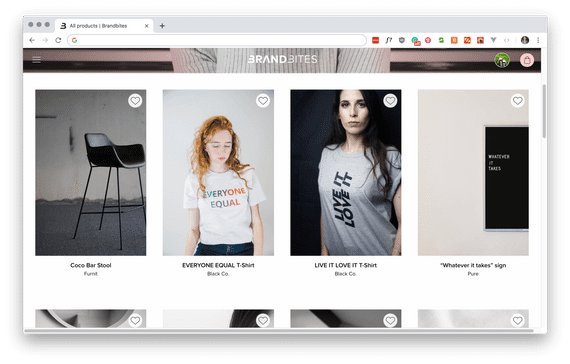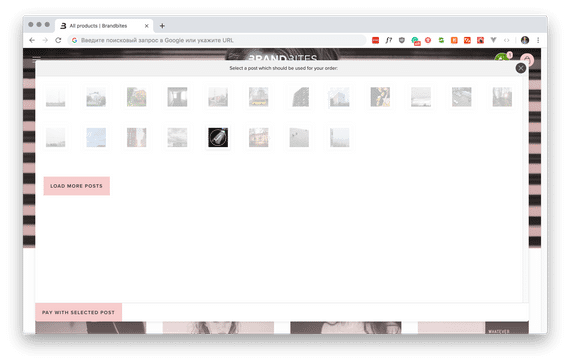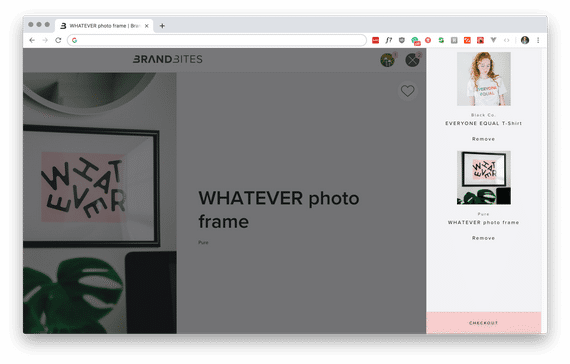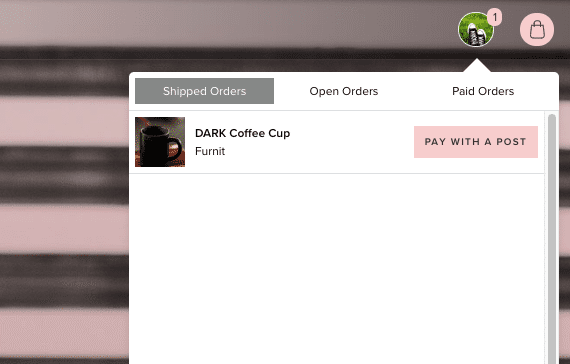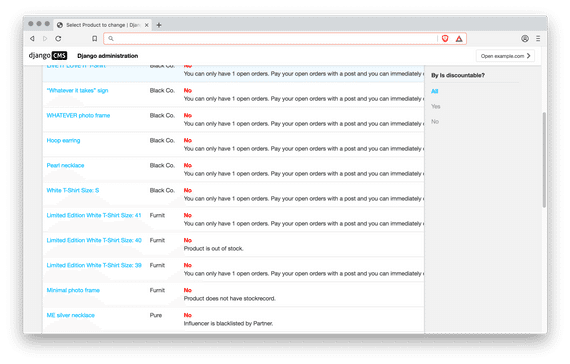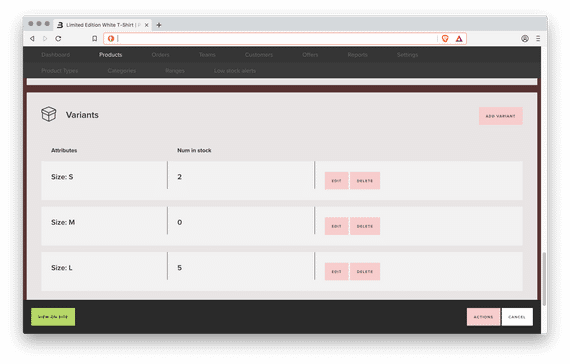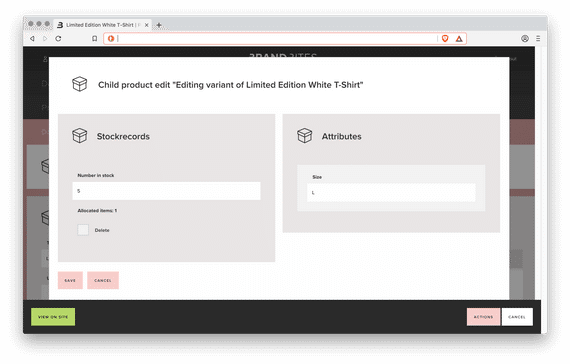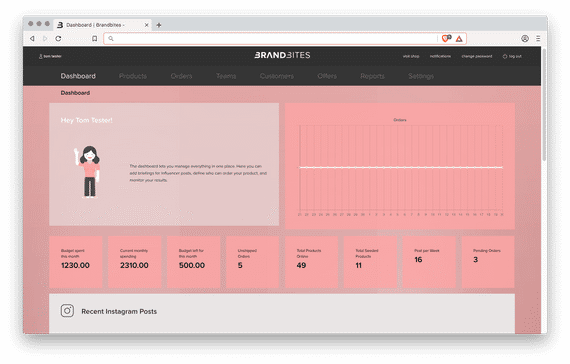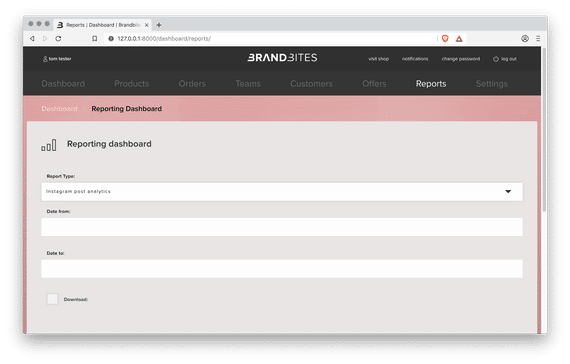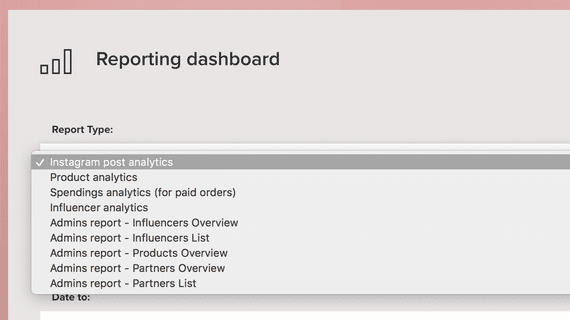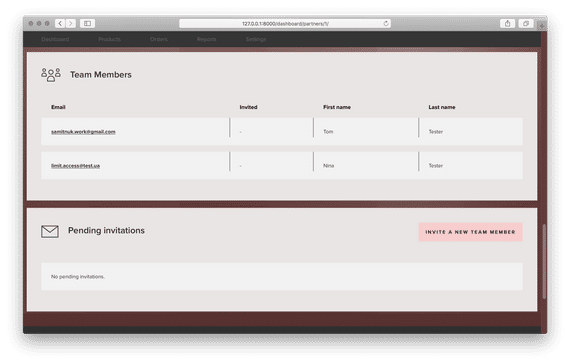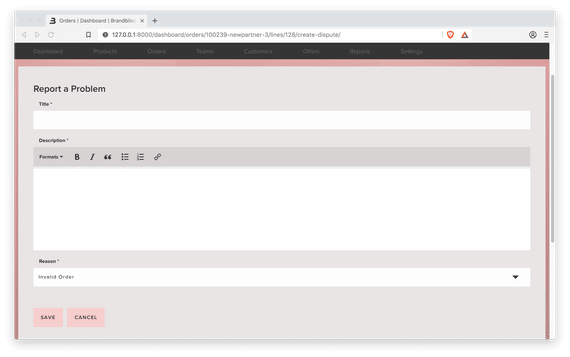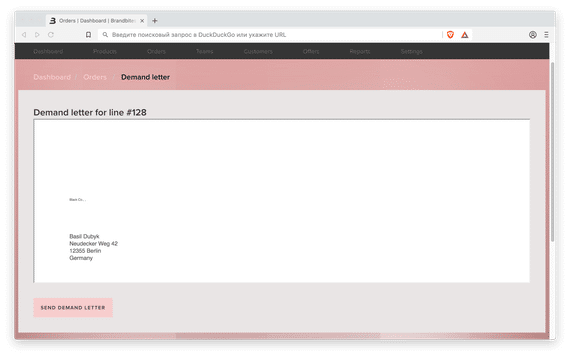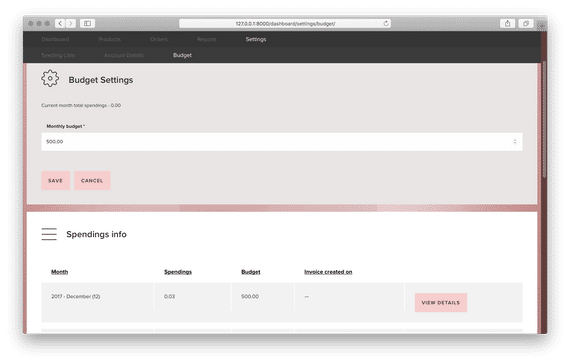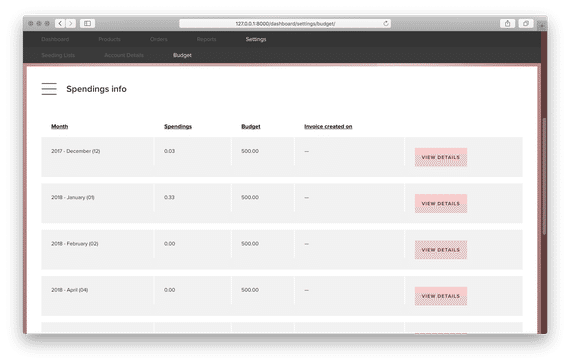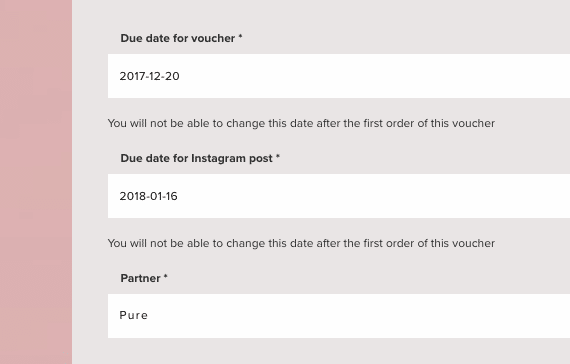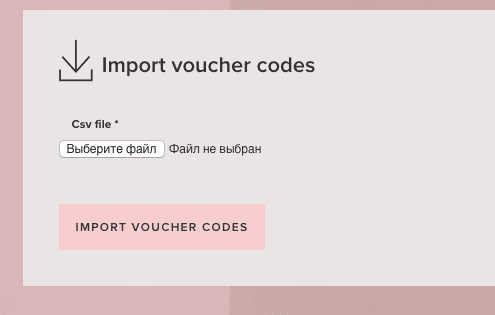Dashboard Product Management
As many products, listed on the platform had different variations, depending on attributes (color, size etc)
we decided to revise product variants management in the dashboard.
Thus, we simplified it as much as possible and instead of managing product on the separate page, as it is
in the Oscar, we introduced modal with two sections: number of items in stock and attribute values.
To save time for creation of similar products we implemented product duplication, which allowed admin user
to create draft product and modify it.
We also introduced product statuses, such as "draft", "active" and "inactive" which allowed staff members to
control product visibility without necessity to remove it — after deactivation it could just stay as is
and re-activated later.

